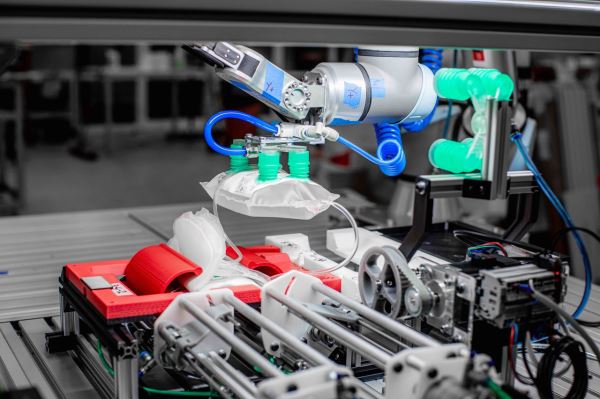Researchers at Swinburne University of Technology in Melbourne have taken on the near-impossible challenge of automating the processing of blood donation packs – and proved that it’s possible.
Until now, all blood donation processes have been largely manual.
At a processing centre, whole blood donations must be separated into its cellular components via centrifugation. To do this, the blood pack must be folded in a particular way to ensure during the process there is no bacterial contamination (which, in turn, increases shelf life).
Staff are highly trained to carry out this operation, but there are still risks and instances of human error. Damaged or torn packs not only lead to the loss of a precious donation, but also disrupt production and expose staff to potentially hazardous biological materials. Even subtle non-conformities can occur and build over time, leading to quality deviations.
On the other hand, such repetitive motions – sometimes hundreds a day – can cause ergonomic strain and injury for staff.
Highly complex procedure
Deputy Director of Swinburne’s Factory of the Future, Dr Shanti Krishnan led the project to automate the folding and centrifuge loading process using collaborative robots, vision systems, jigs and actuators.
Folding is a highly complex procedure that is challenging to automate using robots. The blood packs are soft and "deformable" objects, which can lead to a significant variation in shape and geometry. This makes it difficult for a robot or computer that is not suited to the myriad of geometries.
The automation of the manipulation of soft deformable objects has long been a hot topic in robotics research.
The Swinburne team has been looking for any automation opportunities in the process – breaking it down into smaller steps and building in design and engineering contingencies so that the final design could involve a combination of semi-automated, automated or assisted processes.
The outcome
Swinburne delivered a proof-of-concept prototype to show automation can be used to fold whole blood collection packs.
The project has been extended to focus now on improving the speed of the robot – which is currently slower than a human.
“I was excited at the prospect of finding an automated innovative solution to a repetitive manual process in the medical industry, especially one that uses collaborative robots and machine vision systems,” says Dr Krishnan.
“I am proud to say that the dedicated team effort of engineering excellence and applied research at Swinburne’s Factory of the Future has resulted in the successful completion of the proof of concept design.
“We have developed automated folding of complex soft, deformable packs and, thereby, added significant value to a vital manufacturing process for our industry partner who are planning to advance it to the next stage of commercialisation.
“It is a fantastic outcome that could have a significant impact. As all processing centres have almost identical laboratory setups, the results from this project could be translated nationally.”
Exploring new opportunities
Dr Krishnan says the findings could be translated to other, similar processes involving soft deformable objects – with an impact on food, health, manufacturing and other industries.
The project was made possible due to funding provided by the Innovative Manufacturing CRC (IMCRC), an independent, for-impact cooperative research centre.
Simon Dawson, Director Industrial Transformation (IMCRC) said: “In the medical industry like any other, the future belongs to those organisations that are willing to embrace advanced technologies such as robotics, sensors and data analytics, not only to improve routine processes to lift productivity, but also go beyond and explore new opportunities.
“This research collaboration is a great example.”
Mr Dawson said Swinburne University of Technology brings distinct expertise to projects of this kind.
The researchers are helping industry partners to consider and apply new technologies to specific problems and develop innovative solutions.
This not only provides direct benefits to the process but offers critical insights in the potential that Industry 4.0 can bring to the health sector, Mr Dawson says.


